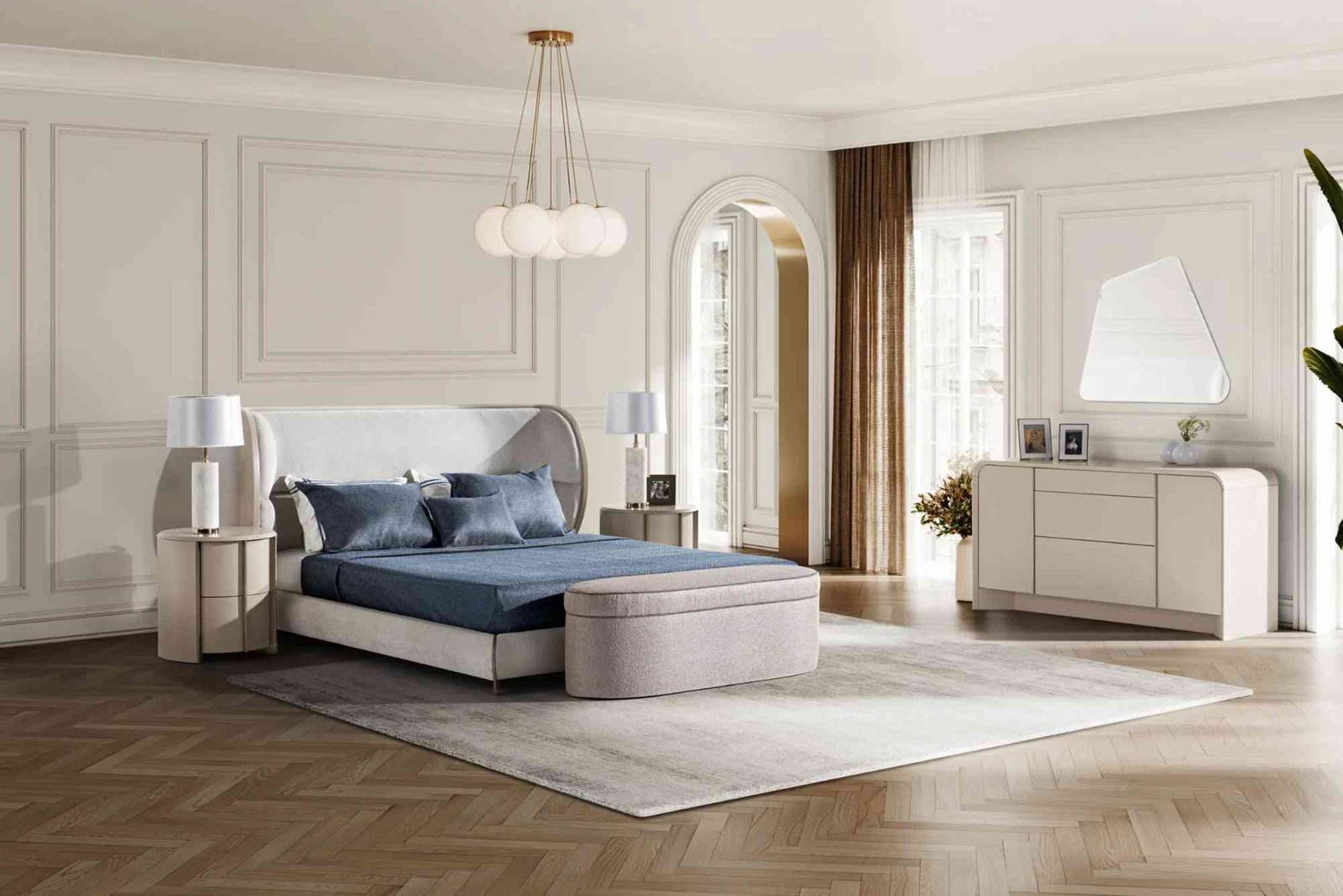Introduction
Modern furniture models have transformed how we think about interior spaces. They bring a mix of simplicity, elegance, and practicality, helping homeowners create environments that feel both stylish and comfortable. Whether you live in a small apartment or a large house, choosing the right furniture can completely change how your space looks and feels.
Understanding Modern Furniture Design
Modern furniture is defined by clean lines, minimal ornamentation, and a focus on function. The concept originated in the early 20th century, influenced by design movements such as Bauhaus and mid-century modernism. These styles emphasized simplicity, geometry, and the use of new materials like metal, glass, and molded plastic. Modern furniture models continue to evolve, but they always prioritize comfort, efficiency, and timeless aesthetics.
Characteristics of Modern Furniture
One of the main traits of modern furniture is its emphasis on geometry and simplicity. Designers avoid unnecessary decorations and focus on the natural beauty of form and material. The color palette tends to be neutral—think white, gray, black, beige, and wood tones—allowing bold accents or textures to stand out. Modern pieces are also versatile; a sleek sofa or modular coffee table can easily adapt to different interior themes.
Function Meets Aesthetics
Every piece of modern furniture serves a purpose beyond appearance. Storage beds, extendable dining tables, and sectional sofas with built-in shelves are just a few examples. The focus is on making everyday life easier while maintaining visual balance in the room. Functionality is a hallmark of modern furniture design because it supports the needs of contemporary living—compact, efficient, and stylish.
Popular Modern Furniture Models for Today’s Homes
When browsing modern furniture models, you’ll notice that they cater to every room in the home. Let’s explore some of the most sought-after pieces that define current design trends.
Modern Sofas and Sectionals
The sofa is often the centerpiece of any living room. Modern sofas feature low profiles, simple shapes, and neutral fabrics like linen or velvet. Sectional designs are highly popular because they offer flexibility in arrangement and suit both large and small spaces. Many models come with built-in storage or adjustable backrests to enhance comfort.
Minimalist Coffee Tables
Coffee tables in modern interiors are more than just functional surfaces—they complete the room’s design. Common materials include glass, metal, and light oak. Some models have sleek marble tops or modular designs that allow multiple uses, such as a mini work desk or extra seating.
Contemporary Dining Sets
Dining spaces reflect the modern lifestyle’s shift toward informal and open-concept living. Dining tables now feature slim legs, matte finishes, and materials like engineered wood or tempered glass. Pairing them with upholstered or molded plastic chairs creates a welcoming, contemporary look.
Bedroom Essentials
Modern beds often have clean headboards, concealed storage compartments, and built-in lighting. Platform beds and floating nightstands create an illusion of space, perfect for urban apartments. Wardrobes follow the same principle—sleek sliding doors and minimalist handles keep the look cohesive and uncluttered.
Home Office Furniture
With remote work becoming more common, home office furniture has gained new importance. Modern desks and ergonomic chairs combine beauty and practicality. Adjustable-height desks, minimalist shelving units, and compact workstations allow you to stay productive while keeping your workspace stylish.
Materials Used in Modern Furniture Models
The choice of materials plays a big role in modern furniture’s appeal. Designers focus on durability, sustainability, and texture variety to create unique pieces that fit diverse interiors.
Wood and Veneer Finishes
Wood remains a timeless choice for modern furniture. Light-colored varieties like ash, beech, and oak dominate contemporary designs because they make spaces feel airy and natural. Veneer finishes are also used to achieve a similar aesthetic at a more affordable cost.
Metal and Glass Combinations
Stainless steel, aluminum, and chrome are common in furniture frames, legs, and handles. Combined with glass tops or polished surfaces, these elements add a sleek, modern feel. Transparent glass also helps open up visual space, making rooms look larger.
Fabric and Leather Upholstery
Neutral-toned fabrics like cotton, velvet, or polyester are often paired with streamlined silhouettes to create an inviting atmosphere. Faux leather is a sustainable alternative to real leather, providing the same sophisticated texture without environmental concerns.
Sustainable and Eco-Friendly Materials
Eco-conscious consumers now demand furniture made from recycled, renewable, or biodegradable materials. Many modern brands use bamboo, cork, reclaimed wood, or recycled plastics. These innovations not only reduce waste but also introduce unique textures to furniture design.
How to Choose the Right Modern Furniture for Your Home
Selecting modern furniture models requires more than just following trends. It involves understanding your space, lifestyle, and personal taste. Here are expert insights to guide your decision.
Assess Your Space and Needs
Before purchasing any piece, evaluate your available space and daily activities. Compact furniture with multifunctional features suits smaller homes, while statement pieces like large sectional sofas work better in spacious living rooms.
Focus on Comfort and Ergonomics
Even the most beautiful furniture fails if it’s uncomfortable. Check the height, depth, and cushioning of seating furniture before buying. Ergonomically designed chairs and sofas enhance posture and comfort, especially in work or study areas.
Match the Color Palette
Consistency in color brings harmony to modern interiors. Stick to neutral tones for main furniture pieces and use accent cushions, rugs, or lamps for pops of color. Matching textures—like matte finishes with soft fabrics—also enhances visual balance.
Quality Over Quantity
Investing in fewer, high-quality items pays off over time. Solid frames, durable fabrics, and scratch-resistant surfaces extend the furniture’s life while maintaining its modern appeal.
Personalize Your Space
Even in modern design, personality matters. Add custom details such as art, throw pillows, or unique lighting to reflect your individuality. Modern interiors are minimalist but not devoid of character.
Trends in Modern Furniture Design for 2025
Modern furniture continues to evolve with technological and cultural shifts. As we move into 2025, several trends stand out.
Smart Furniture Integration
Smart technology is reshaping furniture design. Wireless charging tables, adjustable lighting, and smart recliners are now common. These features combine digital convenience with classic aesthetics.
Organic Shapes and Soft Curves
While geometry dominates modern design, softer shapes are making a comeback. Rounded sofas, circular tables, and curved shelves create a more relaxed, human-centered atmosphere.
Sustainable Design Focus
Sustainability is no longer optional—it’s essential. Designers emphasize eco-friendly production, ethical sourcing, and long-lasting materials to reduce waste and promote conscious living.
Modular and Flexible Designs
As urban homes get smaller, modular furniture allows flexible arrangement. Pieces like stackable chairs, foldable desks, and sectional sofas maximize space without sacrificing comfort.
Benefits of Modern Furniture Models
Modern furniture models offer more than visual appeal. They promote efficiency, comfort, and mental clarity in everyday life. Clean lines reduce visual clutter, while multifunctional designs support minimalist living. The use of high-quality, sustainable materials also ensures long-term durability and reduced environmental impact.
Another major benefit is adaptability. Modern furniture complements various styles—from Scandinavian simplicity to industrial chic—making it a smart investment for long-term home design.
Modern furniture models redefine how we experience our homes. Their sleek designs, functional innovations, and sustainable materials make them ideal for modern lifestyles. By choosing furniture that aligns with your needs, style, and space, you can create interiors that are both beautiful and efficient. Whether you prefer minimalist wood tones or high-tech smart furniture, the possibilities are endless.
For more expert insights and tips for choosing modern furniture models, explore our Related Blog article. If you want to stay inspired with design trends and innovations, Learn more about how modern living continues to evolve.
FAQs
What is considered modern furniture?
Modern furniture refers to designs characterized by clean lines, minimalism, and functionality. It uses materials like wood, metal, and glass with neutral colors and geometric forms.
How do I maintain modern furniture?
Regular dusting and gentle cleaning with mild products are enough. Avoid harsh chemicals or direct sunlight that can damage finishes or upholstery.
Can modern furniture work in traditional homes?
Yes. Mixing modern and traditional elements creates a balanced transitional style. A modern sofa, for example, can beautifully complement a vintage rug.
Is modern furniture expensive?
Prices vary based on materials and craftsmanship. High-quality modern pieces may cost more initially but offer superior durability and timeless design.
What is the difference between modern and contemporary furniture?
Modern furniture refers to designs rooted in early- to mid-20th-century styles, while contemporary furniture evolves with current trends and may include futuristic or artistic elements.












